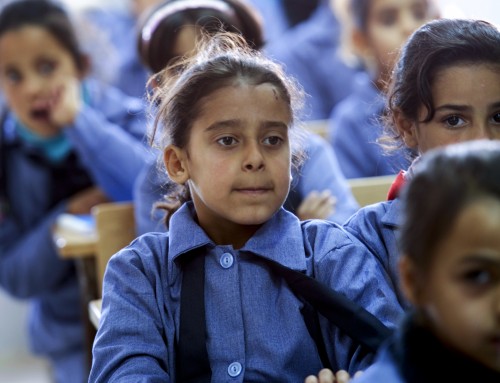Project Description
Austria is one of three countries worldwide which have implemented Gender Budgeting in their constitutions. Gender Budgeting is an essential instrument for establishing gender mainstreaming within government policies and assigning clear responsibilities, making governments accountable for their gender policy commitments. The Federal Ministries need to target equality between women and men in their budget documents. This means the integration of gender objectives, measures and indicators in the strategy reports, in the federal budget and in the supplementary sheets on the basis of the Federal Budget Act.
Description
Gender Budgeting is the application of gender mainstreaming in the budgetary process. It means that federal, state and community budgets are analysed with regard to their impact on the lives of women and men, and are adapted according to gender equality objectives.
Gender Budgeting emphasises that the needs of women and men alike ought to be taken into account. When designing budgets, revenue and expenditures must ensure that equality between women and men is encouraged. Gender Budgeting has also other advantages, as it increases the quality and accuracy of policy decisions, increases the transparency of administrative actions and contributes to a greater acceptance of the citizens for measures of policy.
Austria is one of three countries worldwide which have implemented Gender Budgeting in their constitutions. Since 2009, the objective of de facto equality between women and men in the context of budgetary planning is enshrined in the Federal Constitution. Article 13(3), valid for all authorities, reads as follows: “Federation, Länder and municipalities have to aim at the equal status of women and men in the budgeting.” Since 2013 gender budgeting must be implemented at the federal level. The de facto equality between women and men has to be considered in all stages of administrative action, from the formulation of objectives to their implementation and evaluation.
Since 2009, federal, provincial and local authorities have to seek effective equality of women and men in their financial management. This administrative mandate was reinforced for the federal government on 1 January 2013 with the introduction of the so-called “performance management”, which analyses the relation between resources spent and the achieved impact. Every Federal Ministry is obliged to formulate between one and five objectives in designing budgets. One of these should have a gender dimension. Moreover, they are required to present measures, such as plans, reforms, activities, projects, etc., for pursuing these objectives. At least one milestone or indicator for implementation and measurability should be specified for each measure.
The Federal Ministries need to target equality between women and men in their budget documents. This means the integration of gender objectives, measures and indicators in the strategy reports, in the federal budget and in the supplementary sheets on the basis of the Federal Budget Act.
Another part of the orientation towards outcome is the regulatory impact assessment. This is the implementation of the principle of outcome orientation in the policy-making an evaluation process. This means that any draft legislation as well as projects of significant financial importance will be discussed on basis of their desired outcomes and outputs.
Their success will be measured by the use of indicators. The details of the outcome orientation are elaborated in the Strategy Report on the Medium Term Expenditure Framework. In the yearly planning, the gender equality outcomes and outputs are set out in the Annual Federal Budget Statement on budget chapter and global budget levels as well as in the Explanatory Budget Documents on detail budget level.
Key results
Gender Budgeting is an essential instrument for establishing gender mainstreaming within government policies and assigning clear responsibilities, making governments accountable for their gender policy commitments. It increases the transparency of, and participation in, the budget process. It aims at democratising budgetary processes as well as budget policy in general. Gender-responsive budgeting initiatives contribute to the growing practice of public consultation on and participation in the preparation of budgets and in monitoring their outcomes and impact, particularly that women are not excluded from this process. This strengthens economic and financial governance by promoting transparency. It also contributes to better targeting of policy measures and hence to the pursuit of effectiveness and efficiency.
Key lessons learnt
Despite the overall success of the Gender Budgeting strategy, some challenges still remain. These include the level of defined objectives, measures and indicators, which differ in respect of quality and ambition. Over-ambitious general objectives, such as the reduction of the gender pay gap, set by ministries cannot be fulfilled by just one ministry.
These objectives and measures concerning gender equality must be better coordinated between the different ministries concerned. Furthermore, international comparison and improvements of international ranks are often not used as performance indicators. Lastly, a clear distinction between gender equality targets, female promotions and social targets is often missed.
Other relevant information
In 2000 an Inter-Ministerial Working Group on Gender Mainstreaming/Budgeting was introduced on the basis of a Resolution of the Council of Ministers. The Working Group was created to support and facilitate the implementation of gender mainstreaming and gender budgeting in all federal ministries and at all political levels. With including gender budgeting in the Austrian constitution in 2009 the Working Group also took over the task to promote gender budgeting on all levels. Its tasks include furthermore the exchange of information and best practice initiatives in the various departments, as well as of domestic and foreign best practice examples, to develop criteria for the implementation of the GM – strategy and to monitor and evaluate ongoing projects, measures and the application of the GM – objectives. The chairperson of the Working Group is the Minister for Education and Women’s Affairs.
More information on the Working Group’s work can be found at www.imaggendermainstreaming.at






